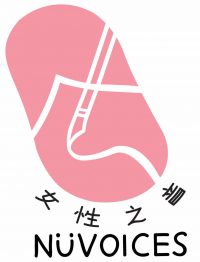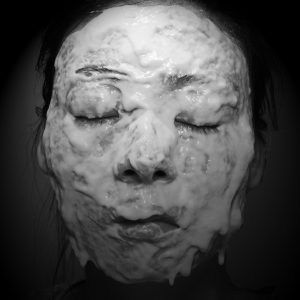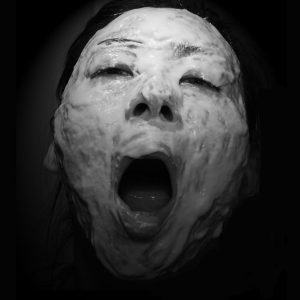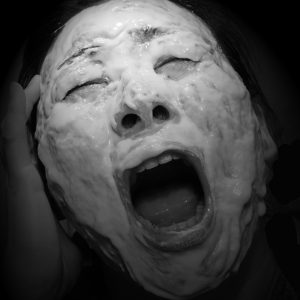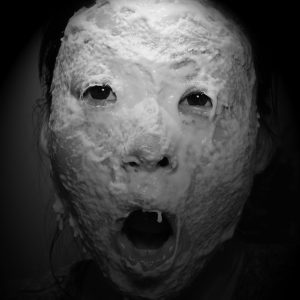BY SU YANG
Physical beauty standards for women have evolved around the world over time, but the quest and thirst for the ideal hasn’t.
Going under the knife to conform to a dominant standard of female beauty has been gaining more momentum, especially in China, where its population spent an estimated RMB121.7 billion (US$17.7 billion) last year on plastic surgery and other medical cosmetic procedures. In 2018, Americans spent an estimated US$16.5 billion in the same industry, despite being the country that has consistently topped the list for the most number of cosmetic procedures performed. Industry analysts predicted that in the next five years, the Chinese market would continue to grow by 25 per cent, meaning more than hundreds of millions of Chinese people would book nip-and-tuck services. From nose jobs, botox to laser hair removals, data from China also showed the younger generation has been increasingly spearheading the trend to alter women’s faces and body shapes. More than 80 per cent of those who received medical cosmetic procedures were under 30 years old.
Feminist Chinese artist Su Yang hopes to challenge patriarchal and consumerist beauty standards that lead women to resort to beauty-enhancement measures through her work. Using herself as a muse, she produces videos and large-scale paintings of herself to exaggerate and represent the outcomes of cosmetic surgery.

“As a feminist artist, I want to take the challenge to show a woman artist’s physical and spiritual power and capabilities of the profession by painting images with visual power in a larger size,” Yang said. Each canvas spans roughly 120 by 160 cm or 150 by 150 cm. “I choose a canvas in this size and manage to fill it with my head to represent the hugeness of a female image and a woman’s painting.”
Having grown up in China’s “Single-Child” era in the 1980s and 1990s, Yang had a unique opportunity to pursue higher education that was previously unavailable to women. When she began her undergraduate studies in the late 2000s, there were twice as many female students compared to male students in her course. In contrast, there were only two female students in her father’s art course of 20 students in the 1980s. In 2017, Yang returned to China to teach at Tsinghua University and found that only one out of ten students in her class was male.
“Women have become more competitive in various fields and benefitted from the social and economic changes of the last three decades,” she said. Yet she added that patriarchal ideologies – which are reflected by issues such as sexual harassment and violence as well as family planning policies – continue to exacerbate gender-based problems in China. “We still have unfinished business.”
Here are a few selected pieces of her work that look at the different forces propelling women to pursue beauty at any cost:
Stripping Off Face -1, 2015, oil on canvas

A woman peels off her own face to depict the process of going under the knife to get an appearance closer to Chinese society’s aesthetic standard.
Double Faces Pre & Post Cosmetic Surgery -2, 2016, oil on canvas


A face is pieced together by different images of Yang as ‘the patient’ before, during and post-surgery. It is meant to mimic how Chinese traditions, politics, the influence of Western culture, and social media under globalization have negatively and physically hurt women.
Less Icon Series, 2015-2016, black-and-white photograph
By masking her own features, this series of self-portraits show how Chinese live-streaming celebrities lose personal features and their identities after cosmetic surgeries. It also aims to emanate a terrifying and powerful persona, in contrast to the femininity and sex appeal the Internet stars use.
Invisible Hands/ Visible Hands, 2017, performance on recorded video
The video shows various hands pressing three different faces onto a woman – an ideal beautiful face, a face suffering through surgery, and a face after a botched operation.
It is meant to depict how invisible hands (ideologies conveyed through advertisements and posters) become the visible hands (women’s hands, surgeon’s hands or anyone’s hands) that physically change women’s appearances.
The Changing Notion of Chinese Beauty Series – II, 2016, video
This video tells the story of a young woman pursuing beauty ideals through radical and even harmful cosmetic surgery processes. It depends the patient’s transformation before, during and after the procedure. After the “surgery,” her face is covered, and no facial characteristics are shown. The piece questions the notion of Chinese internet celebrities and models undergoing cosmetic surgery to attain a standard ideal of beauty. The work exaggerates the subsequent trauma of non-therapeutic cosmetic surgery that has become popular among Chinese women since the 2000s.
Beauty, 2017, short film by Su Yang and Xiaoan Zhang
This short film discusses the shifting ideal of beauty in society that causes women to lose themselves and encourages them to change their appearances through radical means. One of the features of the film is an ambient light that represents various places and atmospheres through which these changes take place. The story is about a woman who has selected to undergo surgery to obtain a “face” that is currently the most popular face trending on Chinese social media. However, since the notion of beauty keeps changing, in the end the face is just another fashion trend that quickly disappears.
About the artist 关于艺术家
Su Yang is a Chinese contemporary artist, a PhD scholar in Chinese feminist art at The University of Melbourne. Yang received her Bachelor Degree from Academy of Arts and Design, Tsinghua University. In 2014, she received her Master of Fine Arts in painting from The State University of New York at Buffalo. She has had successful solo exhibitions in New York and Melbourne. Her work was also shown in selected group exhibitions in China, the US, Australia and Canada. Yang has presented her papers at international feminist art and academic conferences at elite universities and prestigious galleries in Canada and Australia.
杨苏出生于中国实施独生子女政策的80年代,是当代中国艺术家,墨尔本大学中国女权主义艺术研究方向博士学者。本科毕业于清华大学美术学院。2014年获得纽约州立大学布法罗分校油画专业艺术硕士。她曾在纽约州和墨尔本多次成功举办个人展览。她的作品也多次被选入在中国、美国、澳大利亚和加拿大的展览。 杨苏曾多次在加拿大和澳大利亚的精英大学和知名美术馆举办的国际女权艺术和学术会议上发表她的会议论文演讲。
Website: https://suyangvisual.com/ Email: suyangart@outlook.com. Facebook page: Su Yang’s Art

About the editors
Naomi Ng is a journalist interested in covering social issues in Hong Kong and China. She has written about a variety of topics ranging from Hong Kong’s affordable housing crisis to China’s early rise of live-streaming hosts. Her work has appeared in the South China Morning Post and CNN International. Follow her on Instagram/Twitter.
Jessie Lau is a writer, editor and researcher passionate about exploring gender, ethnicity, social policy and identity in China and other parts of Asia. Based in London and Hong Kong, she has written stories on everything from pro-democracy protests in Hong Kong and solitary confinement in Californian prisons to China’s massive boarding school program targeting ethnic Uyghur and Tibetan children. Now freelancing as a video news assistant at The Associated Press, her writing has been published by the The Economist, Quartz, and South China Morning Post, among others. She is a board member at NüVoices, a collective supporting women working on China subjects, and Online Editor-in-Chief of NüStories, its feminist magazine amplifying minority voices.
Twitter @_laujessie Website: www.laujessie.com
